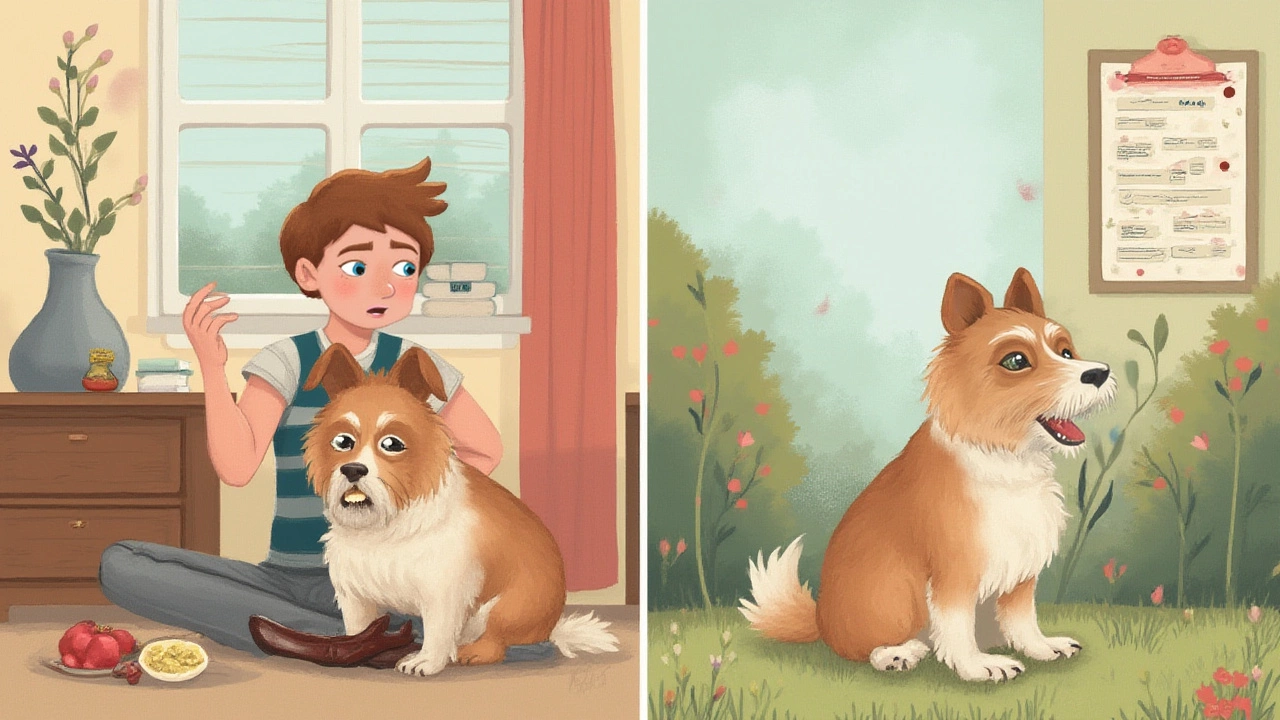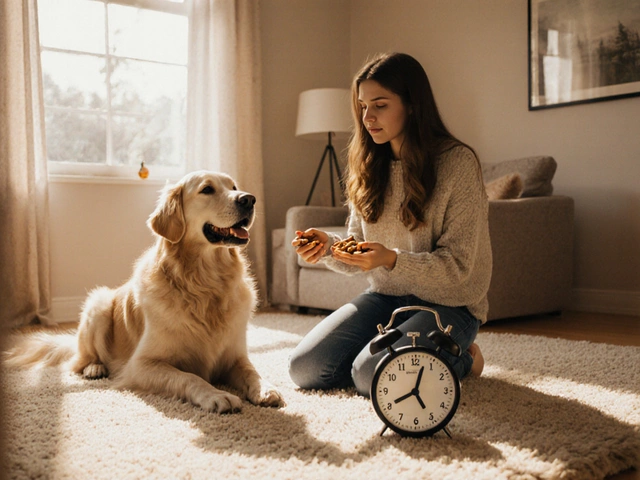Picture this: your sweet dog is off-leash at the park, spots a squirrel, and suddenly the chase is on. You're yelling, waving treats, but it's like you're invisible. Now imagine if a simple tool could help your dog stay focused and safe. That’s the temptation behind training collars—yet, these devices spark heated debates everywhere dog lovers gather. So, should dogs wear training collars? Let's get real about the facts, unpack the emotions, and find what actually works for both you and your pup.
The Different Types of Dog Training Collars
People often lump all training collars together, but they're as different as leashes and harnesses. The classic choke chain was invented in the 1940s to correct problem behaviors fast—just a tug and your dog learns, or so the thinking went. Fast forward, and the shelves at any pet store feature prong collars, shock collars (also called e-collars), citronella collars, vibration collars, and even ultrasonic gadgets. Each collar promises to fix specific issues: pulling, barking, disobedience, or ignoring recall.
So what’s the difference? Prong and choke collars tighten on your dog’s neck when they pull or lunge, applying pressure. Shock collars send an electric pulse, adjustable from a tingle to a jolt, triggered by a remote or automatically (e.g., if the dog barks). Vibration collars buzz, sometimes startling the dog into stopping bad behavior. Citronella collars spray a burst of scent when a dog barks—a less painful, but still unpleasant, deterrent. Then there’s the modern GPS-enabled smart collar, which can track your pup’s location and monitor activity—less of a training tool, more of a canine Fitbit.
The price tag varies wildly. Basic choke chains cost less than $10. Fancy remote-controlled shock collars can set you back $200 or more. Some owners think the investment is worth it—this gear saves them time, keeps their dogs safer, and reduces stress. But here’s a surprise: a 2020 survey by the American Pet Products Association found just 12% of dog owners report ever using shock collars, and most used them briefly.
Each collar has its crowd of passionate fans and equally passionate critics. Trainers who like firm corrections argue these collars, when used right, work like power steering—giving you gentle but instant control. Trainers who prefer positive reinforcement see any device causing pain—or even discomfort—as risky and outdated. Some countries (like Germany and parts of Australia) have actually banned shock collars, citing animal welfare concerns.
The decision gets more complicated when you consider the kind of problem you’re trying to solve. Chronic barking, pulling, or biting can turn daily walks into a headache. Some folks turn to collars when they’ve tried everything else without luck—an act of frustration, not malice. Others see any use of training collars as crossing a line. Beyond opinions, what do the science and numbers say?
How Training Collars Work: Fact vs. Fiction
The science behind training collars is surprisingly split. The basic idea is simple: you apply a consequence (pressure, shock, spray, or vibration) right when your dog does something wrong, and they learn to avoid that behavior. That’s called "aversive conditioning." For it to work, timing and intensity have to be just right—too late or too harsh, and your dog just gets scared or confused.
According to a 2022 study published in Frontiers in Veterinary Science, dogs trained exclusively with aversive tools like prong and shock collars showed more signs of stress—pacing, yawning, lip-licking, even yelping—than dogs trained with rewards. The same research found these dogs were less likely to want to be near their handlers. That’s not just theory. In another controlled trial from the University of Lincoln, shock collar use was linked with increased anxiety and even aggressive behavior in some dogs. Ouch.
Still, not everyone agrees that the collars themselves are to blame. Proponents argue that correct, careful use—often under a certified trainer’s eye—can nip serious problems in the bud, making homes safer for dogs and their families. Critics counter that most people don’t have the timing, experience, or awareness to use these devices without causing harm. The American Veterinary Society of Animal Behavior is clear: they recommend using positive methods first and avoiding tools that cause pain or fear. As they put it:
“Punishment-based training can harm the human-animal bond and lead to increased anxiety, aggression, and other behavior problems.”
The wildest part? Modern technology has blurred the lines. Vibration collars, for example, don’t hurt but can interrupt a pattern (like excessive barking) when other tools fail. Some shock collars let you dial the intensity so low it’s more of a tickle than a zap. But even these gadgets hold risks if misused. Dogs can associate the feeling with whatever they’re focusing on at that moment—other dogs, kids, even you. That’s why some experts say: if you can’t use the collar exactly right, skip it entirely.
Many trainers now blend old and new: using limited corrections for dangerous stuff (like chasing traffic), while focusing mostly on positive reinforcement for daily learning. Still, more and more data tilts the balance toward positive-only, especially for everyday family pets.

Training Collars: When Are They Actually Useful?
Sometimes, the debate isn’t about right or wrong, but about context. Are training collars all bad, or do some situations actually call for them? Let’s look at real-life examples.
Imagine a large working breed—say, a rescue Malinois—with a history of chasing livestock and lunging at strangers. In some rural areas, farmers use e-collars (with strict professional guidance) to teach dogs to avoid sheep or cattle, a skill that could be a matter of life and death, not just convenience. In these extreme cases, a collar might mean keeping a dog in a family instead of being rehomed for aggression or worse. But let’s be honest: most pet owners aren’t dealing with this level of risk. Most want to stop pulling on the leash or barking at the door.
A 2017 study by the University of Bristol compared the effectiveness of electronic collars versus reward-based training for recall and basic behavior. Here’s what they found: both groups showed improvement, but dogs trained with rewards (like food, games, or praise) responded faster and had fewer negative reactions. The kicker? When asked, owners were less stressed and more bonded to their dogs in the rewards group. That tells you a lot about what works—for dogs, and for us humans living with them.
There’s a common thread in the stories from owners who got results from training collars: they worked with experienced trainers who showed them how to use these tools properly and only when absolutely needed. No one-size-fits-all solution. Still, the main risks remain: confusion, stress, loss of trust, and even accidents if your dog panics or reacts unpredictably.
Here’s a tip for anyone considering a collar: talk to your vet or a certified trainer, ideally someone who uses science-based methods. Never rely just on YouTube tutorials. Always test on yourself before your dog (yes, really!). And remember, a collar is never a fix for boredom or lack of exercise—dogs need outlets for their energy, not just gadgets to stop unwanted behaviors.
Safer and More Humane Alternatives
If the idea of using a shock or prong collar makes your stomach turn, you’re not alone. Humane dog training methods have exploded in popularity for a reason: they’re both safer and more effective for most families. Modern positive reinforcement works by rewarding behaviors you want, not punishing the ones you don’t. Think: treats for sitting calmly, praise for coming when called, toys for ignoring distractions. Not only does this make learning fun, but it also strengthens the bond you have with your pup.
There’s real science behind this, too. According to the Association of Professional Dog Trainers, dogs taught with positive reinforcement learn faster, remember skills longer, and are less likely to become anxious or fearful. That means fewer headaches for you and a happier dog at home.
Simple tools can help. Front-clip harnesses discourage pulling without pain. Head halters guide a dog’s nose gently, giving you steering without force. Long training leads let you practice recall while keeping your pup safe. Clickers create a clear signal: “Yes, you did the right thing!”—and dogs love the game of earning their next click-treat.
If your dog starts barking like crazy at the postman or chews everything in sight, it's usually a cry for attention, stimulation, or relief from boredom. Take a closer look: is your dog getting enough walks, play, and social time? Are you being consistent with commands and rewards? Often, simple changes—like structured play, new toys, or signing up for a local obedience class—work better than any device you can buy. And if issues persist, it may be time for a professional assessment; sometimes medical issues can show up as behavior problems.
Here’s a quick comparison of collar types versus positive tools:
| Tool | How it Works | Main Risks | Main Benefits |
|---|---|---|---|
| Shock Collar | Delivers electric pulse as correction | Anxiety, pain, lost trust | Quick control for urgent behaviors |
| Prong Collar | Applies pressure via metal prongs | Injury, fear, aversion | Stops pulling (with risk) |
| Vibration Collar | Vibrates to interrupt behavior | Startle response | Non-painful, milder than shock |
| Citronella Collar | Sprays scent when barking | May cause stress | Does not cause pain |
| Front-Clip Harness | Redirects pulling gently | Needs proper fitting | Humane, safe for most dogs |
| Clicker & Treats | Rewards positive behavior | Needs consistency | Builds lasting trust and learning |
The real win? Tools that teach both you and your dog how to communicate better, rather than just silence unwanted behaviors.

Making the Best Choice for Your Dog
Deciding whether your dog should wear a training collar comes down to your unique situation. Is your dog at risk to themselves or others without fast intervention? Have gentle, reward-based methods failed, even with professional help? Does your breed, size, or living situation make certain tools more necessary? These are real questions—there’s no shame in seeking help, but there’s also no shortcut to building trust and good manners in your dog.
If you choose a training collar, remember a few golden rules:
- Always work with a trusted, science-based trainer.
- Always use the mildest setting possible—never more than your dog truly needs.
- Never leave a collar on all day; use only during training sessions.
- Pair it with lots of rewards for good behavior, not just corrections for mistakes.
- Watch for stress signs—if your dog seems fearful, tries to hide, or growls when you show the collar, stop and reassess.
If you decide collars aren’t right for you, there’s a world of creative training options to explore. Obedience classes, puzzle toys, new walking routes, fetch games, scent work—all can channel your dog’s energy into something positive. Remember: training is about building a relationship, not just fixing problems.
So, should dogs wear training collars? For most loving pet owners, the best results and happiest tails come from positive reinforcement and patience, not quick fixes or force. Sure, in rare cases—say, for high-risk professional working dogs—certain collars with expert supervision might make sense. But for the average family dog, trust, kindness, and clarity win out every time. If your goal is a well-mannered, joyful companion, you can't go wrong making your dog’s well-being the starting point for every training decision.







